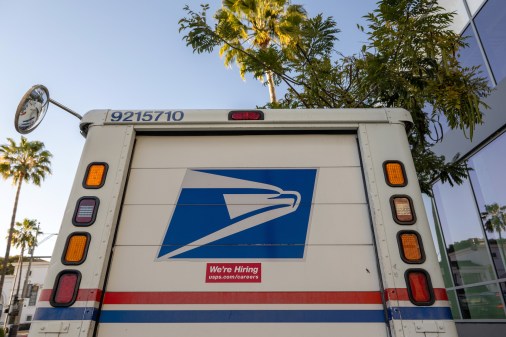The financial future for the United States Postal Service might be uncertain, but according to two recent reports from the agency’s Office of Inspector General, innovative new products could pull the agency into the future.
In one report, focused on what the next generation of postal customers will look like, the OIG partnered with Deloitte to use scenario planning to understand what the customers of the future will need and expect from USPS.
The fast-paced and rapidly changing technological environment makes this transition different from previous customer shifts, the report said.
“Change used to be generational, driven by slow-moving and predictable forces like demographic shifts,” the report said. “Now, rapid technology innovation means that change is almost continuous and unpredictable.”
 Source: USPS OIG
Source: USPS OIGThe OIG came up with a few main scenarios of what the postal customer climate could look like in 20 years and suggested ways the agency could innovate current offerings or decide on new products to feature.
In the “From Our Family to Yours” scenario, the OIG predicts that groups, not single customers, will give brands a seal of approval. To compete in this scenario, the post office could potentially offer a “trustmark” to some companies, allowing the agency to use its longstanding status with the public to verify the capabilities of other companies. One use of the trustmark could be through the verification of some sellers on websites like Craigslist and eBay, the report said.
In this scenario, the OIG also recommended the agency look into offering next-day printing for localized customers.
Similarly, in the OIG’s “All Eyes on You” scenario, customers will use technology to tailor products seen in a physical retail location to themselves online. For instance, after seeing a particular type of running shoe in a store, a user can go online and design a customized version. When the mail arrives the next day, the consumer will have a two-dimensional printout of how the shoe will look embedded with a QR code that can direct the user back online to finish the purchase.
“All Eyes on You” also encourages the post office to link physical addresses to permanent email addresses to facilitate a world of communication on and offline. The scenario also examines using driverless delivery and extra post office facility space as community centers or hubs to help small businesses and consumers innovate.
To facilitate other potential scenarios, the OIG’s report also recommended the Postal Service look into hosting an eLockbox – an online storage facility that is secured and backed by USPS – and offering on-demand 3-D printing, secure digital messaging and government concierge services.
The report also calls for the creation of what the OIG calls a “ZIP Code Facebook,” which would take a user’s location to enable a community sharing and chatting platform online.
Through the adoption and use of these various technologies, the OIG said USPS’ collection of data can bring more power to the consumer and help move the post office and technology into the world of the Internet of Things.
 Source: USPS OIG
Source: USPS OIGIn the meantime, however, the OIG also looked at already existing mail technology and how the Postal Service can encourage advertisers to take advantage of some of the products to ensure the physical product remains relevant.
Through embedding mail with QR codes, augmented reality technology, near-field communication chips and webkeys, marketers can bring about a new era of connected mail. This connected mail initiative would bind the physical mail product to a digital counterpart.
Through the use of near-field communication chips, a user would have the ability to make their mobile phones or NFC-enabled wearables interact with the mail in front of them to speed up commerce.
Although still in its early stages and still expensive, electronic mail – pieces of mail embedded with an electronic component – also offers marketers a chance to make their mail stand out just a little bit. Through embedded communication devices, video screens and mobile devices can even be included in marketing mail, the OIG report said.
“Electronics are getting thinner, and advertisers are getting more creative,” the report states. “With mobile in print technology, it is now possible to add a direct communication portal, such as a phone or text messaging system, into a direct mailpiece.”
The results of using these technologies and data to innovate the postal industry are “tremendous,” Postmaster General Patrick Donahoe said during the National Postal Customer Council Week event last month.
“As an industry we’re probably experiencing more challenges and opportunities than we ever have. That’s why it’s so important for us all to be on the same page in terms of strategies that can help grow your business and our industry,” Donahoe said. “Technology adoption is the key. You can look across the whole spectrum of our industry and see that nearly every aspect is evolving due to technology adoption.”






